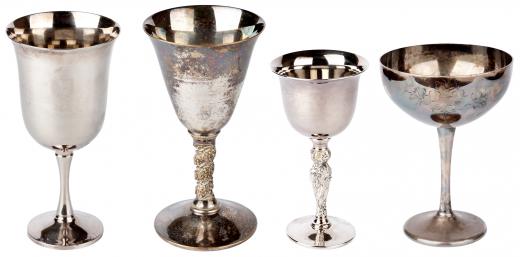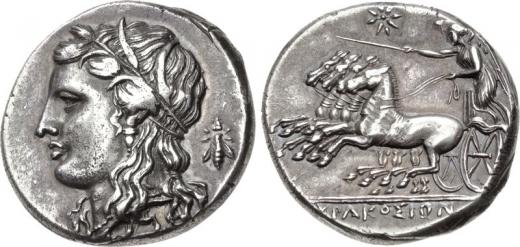What Are the Properties of Silver?
 Jessica Ellis
Jessica Ellis
Silver is a metallic element that has been a part of human history for thousands of years. Best known for its presence in decorative items, such as jewelry, flatware, and vases, silver also serves as an important component of many alloys. Understanding the chemical and physical properties of silver can help create a fascinating and often surprising picture of a seemingly familiar substance.
Silver is considered a fairly inactive metal from a chemical standpoint. This makes it highly useful in a variety of ways; if it was forever bursting into flame or melting, it would hardly have achieved its place in human civilization. Though the reaction is quite slow, silver does respond to sulfuric compounds in the air over time, as can be observed in the tarnishing of silver jewelry and flatware. Some components of ozone can also cause a tarnishing reaction. In an natural ore form, silver does not burn, and melts at the extremely high heat of 961 degrees Celsius (1761 degrees Fahrenheit). It is also noted as a superb conductor of both heat and electricity.

The physical properties of silver are what make it so appreciated by human craftsmanship. It typically appears to be white, with a strong luster that makes it shiny. A soft metal, it is extremely malleable, meaning that it can easily be poured or hammered into thin sheets. In addition to malleability, one of the other important properties of silver is that is ductile, which means it can be pulled into long threads or wires. The soft texture, together with malleability and ductility, make silver an ideal choice for detailed metalwork, such as jewelry. The ability to easily shape and stamp silver also make it ideal for use as coin currency. Its light-reflecting capabilities also make it a particularly eye-catching material, which may be part of the reason why it is appreciated as a decorative metal.

Where the properties of silver truly shine are in combination with other alloys. The silver used for jewelry and other ornaments is often an alloy using silver and copper, known as sterling silver. Sterling silver helps maintain the look and physical properties of silver while allowing the metal to be stretched with less valuable, more common elements. Silver mixed with bromide or chlorine is critical to the creation of film; most film strips are coated in a silver alloy that reacts with light to expose an image. Thanks to its fine electrical conductivity, silver is also used in alloys with zinc to make some batteries.
AS FEATURED ON:
AS FEATURED ON:














Discuss this Article
Post your comments